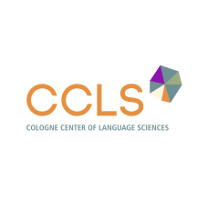Focus Slavic Linguistics
What is the field of study about?
Slavic Grammar
In Slavic languages, morphology, as compared to syntax, fulfills more tasks than in English. Therefore, verbal and nominal inflection morphology, as well as word formation, is a topic of many courses. But Slavic syntax, which is generally best described using models that allow disregarding word order ‒ which usually expresses information structure in Slavic languages ‒ in determining syntactic relationships, is also an important topic. Another important topic is the relationship between the formal side of language on the one hand and semantics and pragmatics on the other. These topics are sometimes treated for individual languages in seminars, but more commonly in a Slavic-comparative and/or typological perspective.
Phonetics, Phonology and Graphematics
The »Slavic character« of most Slavic languages is especially salient in units of the lowest levels of description (sounds, phonemes, letters, graphemes), for instance a prominent status of sibilants and consonant clusters (Russ. vzgljad [ˈvzɡlʲat] 'Blick', Poln. wszczęcie [ˈfʃʧɛɲʨɛ] 'Beginn') or written expressions of Slavic heritage (Cyrillic script, the Háček etc.).
Sociolinguistics
The Slavic languages are characterized by various typologically interesting language-specific peculiarities (e.g. the contrast between a ›higher vernacular‹ and a ›lower vernacular‹ in Russian, the relatively high status of dialects in Polish, the juxtaposition of different national varieties in Serbo-Croatian or the diglossia between ›written Czech‹ and ›common Czech‹), which are commonly addressed in classes. Inter-Slavic and extra-Slavic language contact is also of great interest.
Language History
The study of the history of languages has a long tradition in Slavic languages. Two aspects are to be distinguished: on the one hand, historical grammar, which tries to explain sound change and grammatical change, and, on the other, the history of the Slavic literary languages, concerned with explaining how certain idioms became the linguistic norm for an entire nation.
What does the Cologne Department of Slavic Linguistics do?
Slavic Linguistics at the University of Cologne covers a wide range of topics. Issues studied by researchers at the Institute include verbal semantics, morphology, typology, sociolinguistics, language contact, grapholinguistics, language history and sign language research. We investigate almost all Slavic languages, including Slovenian, Belarusian, Rusyn and Church Slavonic.
What are the prerequisites?
The most important prerequisite is the basic linguistic competence necessary to study Slavic languages. Though some courses can be taken purely out of interest without knowledge of Slavic languages (in case of doubt, contact the instructor), research in Slavic linguistics requires knowledge of at least one Slavic language. Language competency can be developed in language classes while studying. (The Slavic Institute offers instruction in Russian, Polish, Slovak, Slovenian, Serbo-Croatian and Bulgarian.)
If you speak a Slavic language as a first language (or a heritage language) but have never approached Slavic languages scientifically, you should try to get acquainted with the structure of the language and how it compares to other Slavic languages. The following books can be of help:
- Comrie, Bernard & Corbett, Greville G. 1993. The Slavonic languages. London: Routledge.
(extensive descriptions of all official Slavic languages) - Kempgen, Sebastian et al. (Hg.). 2009/2014. Die slavischen Sprachen: Ein internationales Handbuch zu ihrer Struktur, ihrer Geschichte und ihrer Erforschung / The Slavic langages: An international handbook of their structure, their history and their investigation. (Handbücher zur Sprach- und Kommunikationswissenschaft 32.1/32.2). 2 Bde. Berlin, New York: de Gruyter.
(comprehensive volume covering a great range of topics in Slavic linguistics in cross-linguistic comparison) - Panzer, Baldur. 1999. Die slavischen Sprachen in Gegenwart und Geschichte: Sprachstrukturen und Verwandtschaft. 3. Aufl. Frankfurt am Main: Peter Lang.
(comparative and language-specific descriptions) - Rehder, Peter (Hg.). 2003. Einführung in die slavischen Sprachen (mit einer Einführung in die Balkanphilologie). 4. Aufl. Darmstadt: WBG.
(descriptions of the Slavic standard languages) - Sussex, Roland & Cubberley, Paul V. 2006. The Slavic languages. Cambridge: CUP.
(comprehensive comparative treatment of the different levels of language)
What is the field of study not about?
The Slavic Institute is not a language school and doesn’t train interpreters. Proficiency in at least one Slavic language is imperative for linguistic work. Our language courses promote language competency, but are philologically oriented, meaning that, alongside teaching oral fluency, they are meant to enable students to read older texts and understand the language in question on a theoretical level. The aim of Slavic studies is linguistic research, not complete mastery of a language.
Which modules is the field of study principally involved in?
AM 5, AM 6e1–6e3, SM 1k, SM 2a, SM 2c, EM 1, EM 2
